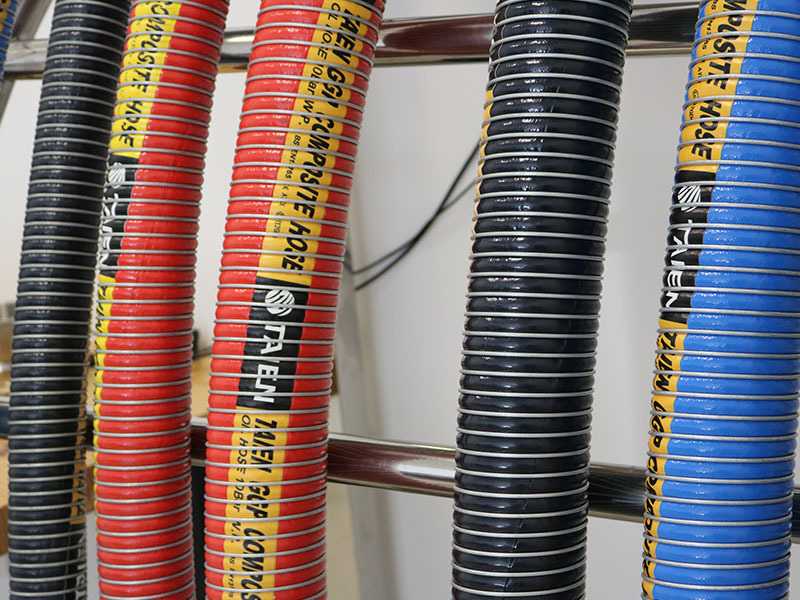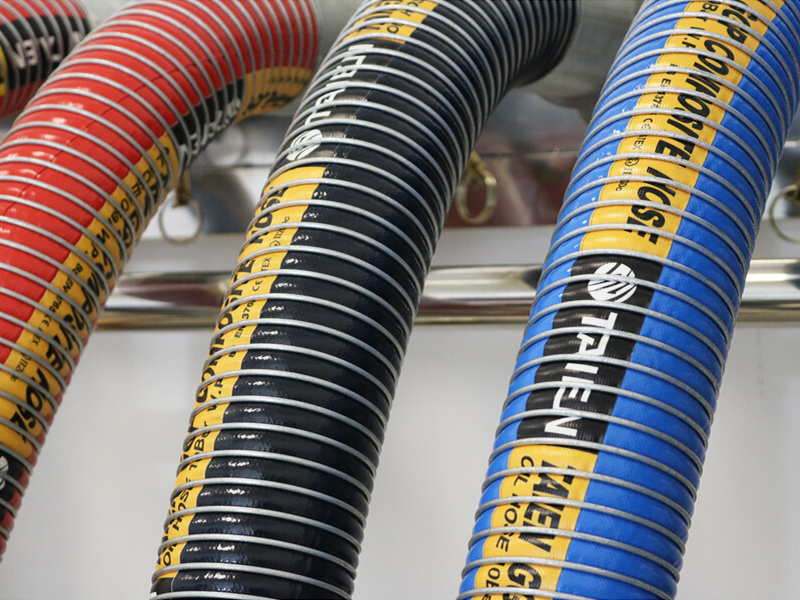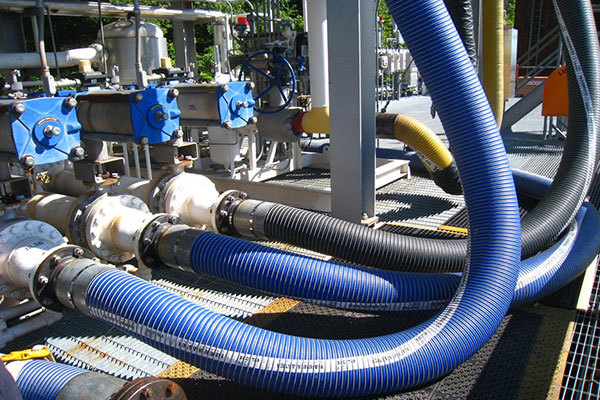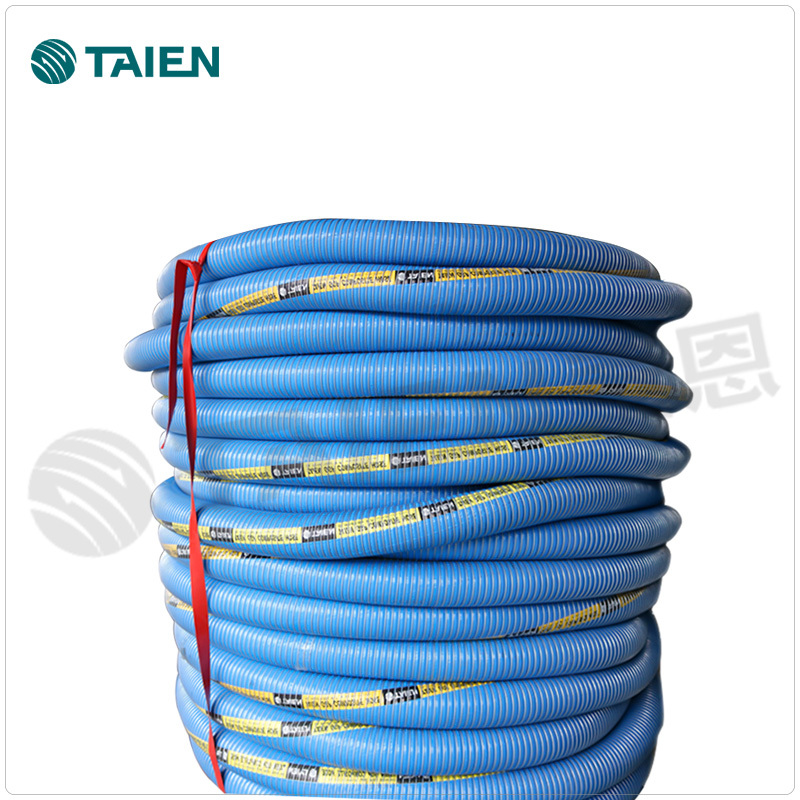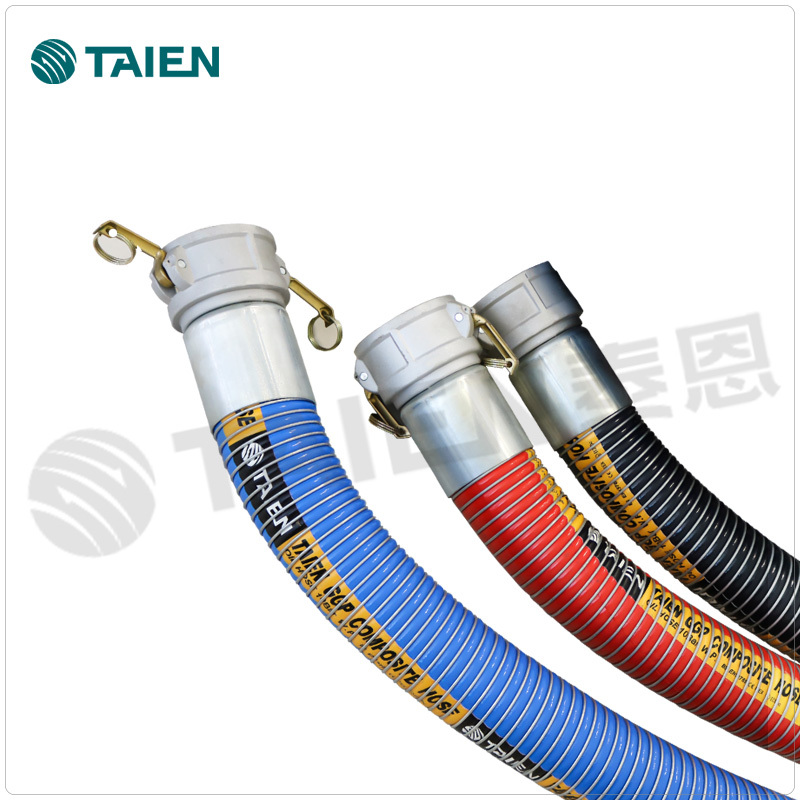The Science Behind Rubber Hose Durability: Essential Insights for Quality and Longevity
Release time:
2025-05-11
Author:
Source:
Abstract
The Science Behind Rubber Hose Durability: Essential Insights for Quality and Longevity
Rubber hoses are ubiquitous in various industries, from construction to automotive applications, serving as vital components in pneumatic systems. Understanding the **science behind rubber hose durability** is crucial for professionals and hobbyists alike, as it directly influences performance and safety. This
The Science Behind Rubber Hose Durability: Essential Insights for Quality and Longevity
Rubber hoses are ubiquitous in various industries, from construction to automotive applications, serving as vital components in pneumatic systems. Understanding the **science behind rubber hose durability** is crucial for professionals and hobbyists alike, as it directly influences performance and safety. This article delves deep into the factors that affect rubber hose longevity, covering material properties, manufacturing processes, usage, maintenance, and more.
Table of Contents
1. Introduction to Rubber Hoses and Their Applications
2. Understanding Rubber Material Properties
2.1 Types of Rubber Used in Hose Manufacturing
2.2 The Role of Additives in Enhancing Durability
3. Manufacturing Processes That Impact Hose Quality
3.1 Extrusion Techniques in Rubber Hose Production
3.2 Importance of Testing and Quality Control
4. Factors Affecting Rubber Hose Durability
4.1 Environmental Conditions and Their Impact
4.2 Mechanical Stress and Hose Performance
5. Maintenance Tips for Extending Rubber Hose Life
6. Innovations in Rubber Hose Technology
7. Frequently Asked Questions
8. Conclusion
1. Introduction to Rubber Hoses and Their Applications
Rubber hoses are essential in transferring fluids and gases effectively, providing flexibility and resilience across various applications. From pneumatic tools in workshops to hydraulic systems in heavy machinery, their roles are vital. Their durability directly impacts system efficiency, operational safety, and cost-effectiveness. Understanding the science behind their durability enables us to select the right hoses for specific applications and maintain them properly for maximum lifespan.
2. Understanding Rubber Material Properties
The primary factor contributing to rubber hose durability is the **material itself**. Different types of rubber offer unique properties, and understanding these can help in making informed choices.
2.1 Types of Rubber Used in Hose Manufacturing
Various types of rubber are utilized in hose manufacturing, each with distinct characteristics:
- **Natural Rubber (NR)**: Known for its excellent elasticity and resilience. However, it is susceptible to weathering and ozone degradation.
- **Nitrile Rubber (NBR)**: Provides excellent resistance to oils and fuels, making it suitable for automotive applications.
- **EPDM Rubber**: Offers superior resistance to extreme temperatures, UV light, and ozone, making it ideal for outdoor use.
- **Silicone Rubber**: Known for its high-temperature resistance and flexibility, though it is generally not oil-resistant.
Choosing the right type of rubber is crucial for the desired application and longevity of the hose.
2.2 The Role of Additives in Enhancing Durability
Manufacturers often incorporate various **additives** to enhance the performance of rubber hoses. Antioxidants, UV stabilizers, and heat-resistant compounds are examples of additives that can significantly improve the durability of rubber hoses. These additives work to protect against environmental factors and mechanical stresses that can lead to wear and tear over time.
3. Manufacturing Processes That Impact Hose Quality
The manufacturing process plays a critical role in determining the durability of rubber hoses.
3.1 Extrusion Techniques in Rubber Hose Production
Extrusion is a fundamental technique used in rubber hose production. During this process, raw rubber materials are heated and forced through a die to shape the hose. The quality and consistency of the extrusion process can significantly impact the hose's strength and flexibility. Precision in this step ensures that the end product can withstand the pressures and stresses of its intended application.
3.2 Importance of Testing and Quality Control
Adhering to stringent testing protocols is essential for ensuring the durability of rubber hoses. Manufacturers conduct various tests, including pressure testing, burst testing, and abrasion resistance testing, to verify the hose's performance under different conditions. Consistent quality control measures help detect defects early and ensure that only the highest quality hoses reach the market.
4. Factors Affecting Rubber Hose Durability
While material selection and manufacturing processes are critical, several external factors can influence the longevity of rubber hoses.
4.1 Environmental Conditions and Their Impact
Environmental exposure is a significant factor in hose durability. Hoses subjected to extreme temperatures, UV radiation, and ozone can experience accelerated degradation. For instance, rubber hoses used outdoors may need additional UV protection to prevent cracking and hardening caused by prolonged sun exposure. It’s essential to consider the environment when selecting and using rubber hoses.
4.2 Mechanical Stress and Hose Performance
Mechanical stress, including bending, twisting, and pressure fluctuations, can also affect hose durability. Hoses that are frequently flexed or subjected to high pressure may develop weaknesses over time. Proper installation and handling practices are essential to minimize unnecessary stress on the hoses, helping to extend their lifespan.
5. Maintenance Tips for Extending Rubber Hose Life
To ensure optimal performance and longevity of rubber hoses, regular maintenance is essential. Here are some effective maintenance tips:
1. **Regular Inspection**: Frequently inspect hoses for signs of wear, cracks, or bulges. Early detection can prevent failure.
2. **Proper Storage**: Store hoses in a cool, dry place away from direct sunlight and extreme temperatures. This helps to prevent premature degradation.
3. **Avoid Overstretching**: Be mindful of the hose's limitations. Avoid stretching or bending hoses beyond their rated capacity.
4. **Correct Fittings and Connections**: Ensure all fittings and connections are secure to prevent leaks and excess strain on the hose.
5. **Clean Regularly**: Clean hoses periodically to remove any contaminants that may cause deterioration.
By adhering to these maintenance practices, one can significantly enhance the durability of rubber hoses.
6. Innovations in Rubber Hose Technology
As technology advances, so does the development of rubber hoses. New materials, manufacturing techniques, and design innovations are emerging, aimed at enhancing performance and durability. For instance, some manufacturers are experimenting with **composite materials** that combine the benefits of rubber with other materials to create hoses that are lighter, stronger, and more resistant to environmental damage. Additionally, innovations in **smart hoses** equipped with sensors can monitor pressure and temperature, alerting users to potential issues before they escalate.
7. Frequently Asked Questions
7.1 What are the common causes of rubber hose failure?
Common causes include exposure to extreme temperatures, UV radiation, ozone degradation, mechanical stress, and improper installation or handling.
7.2 How often should I replace my rubber hoses?
The replacement frequency can vary based on usage and environmental factors. Regular inspections can help determine if a hose needs replacement.
7.3 Can rubber hoses be repaired, or should they be replaced?
Minor damage may be repairable, but extensive wear or significant damage often necessitates replacement for safety reasons.
7.4 What is the best way to store rubber hoses?
Store hoses in a cool, dry place, away from direct sunlight, moisture, and extreme temperatures to prolong their lifespan.
7.5 How do I choose the right rubber hose for my application?
Consider factors such as the type of fluid being transported, the operating environment, pressure ratings, and temperature ranges when selecting a hose.
8. Conclusion
Understanding the science behind rubber hose durability is essential for anyone involved in industries that rely on these components. By considering the material properties, manufacturing processes, and external factors affecting hose performance, we can make informed choices that enhance safety and efficiency. Regular maintenance and awareness of technological advancements further contribute to extending the lifespan of rubber hoses. By equipping ourselves with this knowledge, we can ensure optimal performance and reliability in our pneumatic systems and hardware applications.
Recommended Reading







